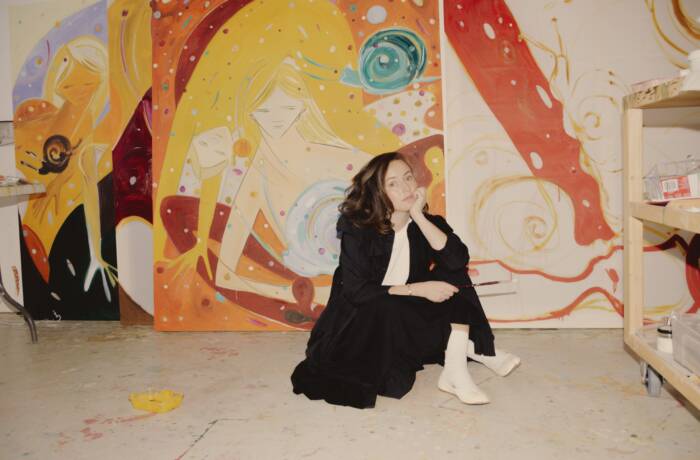
The streets of Delhi. Picture by Igor Ovsyannykov
In the past, India’s heaving capital has been a fly-in, fly-out destination for most tourists, but with a booming art scene and the recent opening of the Hyatt hotel group’s, coolest counterpart, Andaz, Delhi is fast developing its own allure. Yet, it’s the chaos, culture and complexity, that makes Delhi so fascinating, says our Digital Editor, Millie Walton.
It’s daybreak in Delhi and the streets are singing with car horns as taxis and rickshaws muscle past each other, weaving in and out of stray dogs, pedestrians and the occasional cow. India’s capital is more than overwhelming: it’s explosive. Every year the city, consumes huge mouthfuls of landscape, stretching it’s borders further in order to accommodate it’s 9 million and growing population. It’s a heaving labyrinth of sounds, smells and bodies. It takes a few minutes to be able to focus in the sensual chaos. This isn’t London busy: heads down, too busy to stop, see or speak. This is India busy that centres around interaction and trade. There’s something calming about the vibrancy.
The sunlight cuts shapes through Chandni Chowk’s crammed streets, holding dust in the air and illuminating passersbys. It’s one of Delhi’s oldest and busiest market areas, but fortunately the mundane outweighs tourist curiosity so you can play the invisible observer, without being coerced into buying a trinket, batteries or silk scarves (if you want to purchase cheap merchandise of almost any category this is the place). Huge blocks of golden brown sugar lie stacked at the front of the stall, whilst the man next door makes Jalebi, dropping coils of batter into a copper bowl of spitting oil, and a dog hopefully pushes its nose through the litter on the road. There’s less traffic here and most of the rickshaws are pedalled, but the force of bodies is enough to keep you moving underneath the overhanging tangle of electrical wires and pipes. It’s better not to plan a route, not just because there’s little indication to tell you where to turn, but because you can let your surroundings fill you without limitations. I stop at the call of a chaiwala to buy a small cup of steaming, spicy, sweet Indian tea underneath a blackened building that looks as frail as an empty shell.
Read next: The 10th anniversary of Jaipur Literature Festival
I break out of the market onto a wider main road, slipping in behind a local as he crosses the road. The Jama Masjid is the largest and most imposing mosque in India, standing at an elevation of 10 metres with two tall watchtowers guarding the entrance. For visitors there’s an entrance free but it’s well worth it if only to stand barefoot courtyard, eye to eye with ornate yawning mouth that some 25,000 pass through for worship. Locals seem to stop here too, to rest on the steps and watch life sprawling below.

A cup of hot Masala chai exchanging hands. Picture by Igor Ovsyannykov
In a rickshaw some time later, I sit alongside the dense pocket of traffic jostling towards Connaught Place, the commercial and business district where most of the luxury hotels cluster. My driver holds down his horn as a man on a motorbike pushes ahead, the woman perched sidesaddle on the back throws back a stare that silences. Then we’re there, in a circle of colonial style white columns and designer shops. It’s another city entirely: New Delhi. The huge flag of India lazily ripples in the sky above, while smart Indians strut into designer shops. It’s beautiful, but lacks the visual seduction of the older areas. Here you’re less able to blend into the surroundings, as foreigners are quickly spotted by locals as affluent and therefore, targets for money making schemes.
Read next: British model Joanna Halpin on blogging and inspiration
The wider parts of New Delhi though are more pleasant and offer an interesting insight into India’s contemporary art scene. DAG Modern is the place to begin, with an impressive collection of modernist works, experimental art forms and paintings by some of the country’s most respected names. The theme of memory and identity that’s gripping the art world globally, reveals itself here with a display of works from 14 diaspora artists interpreted through western and Indian writings. I stand captivated by Satki Burman‘s swirl of moving colours that’s acutely relatable in this vibrant setting.

The Hyatt Regency Hotel, Delhi
Outside the heat has settled and the air is visibly thick with pollution. I retreat to India’s oldest luxury residence, the Hyatt Regency that’s cool and sultry with recent renovations.
The bakery at the back is still where many of the wealthy local families buy their bread and pastries, sending their drivers to make the most of the end of the day 50% discount. I sit downstairs in the cafe for a Indian high tea of chai, samosas and pani puri ( crisp balls filled with potato and spicy tangy water) before soaking in the jacuzzi pool, in the hotel’s gendered spa. As it’s Chinese New Year, dinner is at the hotel’s famed China Kitchen for a feast of crispy duck and dumplings. Oddly, it’s the best Chinese food I’ve ever tasted.
As I wander upstairs to bed, it strikes me that it’s incredibly still within the hotel walls, and I wonder, perhaps whether that’s the ultimate luxury in a city that’s endlessly restless.



